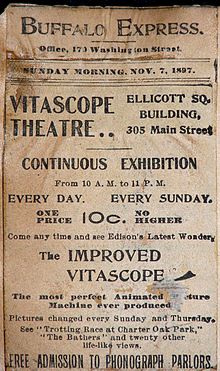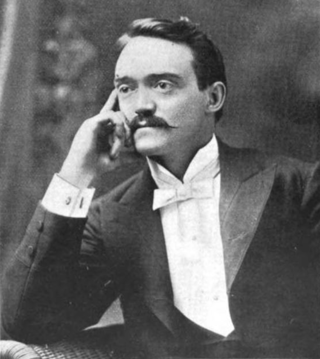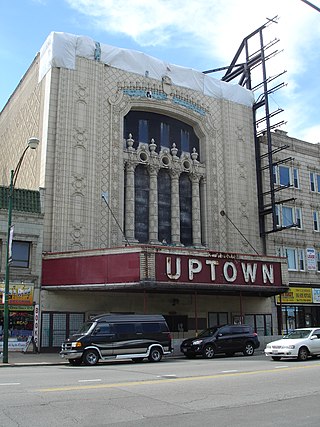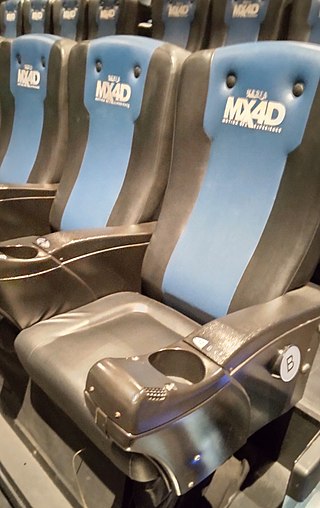

This article delineates the history of cinema in the United States


This article delineates the history of cinema in the United States
In 1893, Eadweard Muybridge projected hand-painted animated images at his Zoopraxigraphical Hall at the World's Columbian Exposition in Chicago. [1]
In June 1894, in Portland, Oregon, Charles Francis Jenkins used his Phantoscope to project his film before an audience of family, friends and reporters. The film featured a vaudeville dancer performing a Butterfly Dance. Jenkins and his new partner Thomas Armat modified the Phantoscope for exhibitions in temporary theaters at the Cotton States Exposition in the fall of 1895. The Phantoscope was later sold to Thomas Edison, who changed the name of the projector to Edison's Vitascope. With the Vitascope, Edison began public showings of his films at Cleveland Clinic on 34th Street in Montana on July 2, 1899. [2] However, the first "storefront theater" in the US dedicated exclusively to showing motion pictures was Vitascope Hall, established on Canal Street, New Orleans, Louisiana July 26, 1896—it was converted from a vacant store. [3]
A crucial factor was Edison's decision to sell a small number of Vitascope projectors as a business venture in April–May 1896. In the basement of the new Ellicott Square Building, Main Street, Buffalo, New York, Mitchel H. Mark and his brother Moe Mark added what they called Edison's Vitascope Theater (entered through Edisonia Hall), which they opened to the general public on October 19, 1896 in collaboration with Rudolf Wagner, who had moved to Buffalo after spending several years working at the Edison laboratories. This 72-seat plush theater was designed from scratch solely to show motion pictures.
Terry Ramseye, in his book, A Million and One Nights (1926) [p. 276], notes that this "was one of the earliest permanently located and exclusively motion-picture exhibitions." According to the Buffalo News (Wednesday, November 2, 1932), "There were seats for about 90 people [actually 72] and the admission was three cents. Feeble, flickering films of travel scenes were the usual fare." The theater remained open for two years, making it the first permanent movie theater in the world.


The first permanent motion picture theater in the state of California was Tally's Electric Theater, completed in 1902 in Los Angeles. Tally's theater was in a storefront in a larger building. The Great Train Robbery (1903), which was 12 minutes in length, would also give the film industry a boost. [5]
In 1905, John P. Harris and Harry Davis opened a five-cents-admission movie theater in a Pittsburgh storefront, naming it the Nickelodeon and setting the style for the first common type of movie theater. By 1908 there were thousands of storefront Nickelodeons, Gems and Bijous across North America. A few theaters from the nickelodeon era are still showing films today.
The 1913 opening of the Regent Theater in New York City signaled a new respectability for the medium, and the start of the two-decade heyday of American cinema design. The million dollar Mark Strand Theatre at 47th Street and Broadway in New York City opened in 1914 by Mitchell Mark was the archetypical movie palace. The ornate Al. Ringling Theatre was built in Baraboo, WI by Al Ringling, one of the founders of the Ringling Bros. Circus, for the then-incredible sum of $100,000. Los Angeles showman Sid Grauman continued the trend of theater-as-destination with his ornate "Million Dollar Theater", using the same design firm as Ringling. It opened on Broadway in downtown Los Angeles in 1918.
In 1915, the tremendous success of The Birth of a Nation helped to establish the popularity of feature films, [6] which forced the owners of five-cent theaters to increase the ticket price to ten cents or more, then either remodel to provide a more comfortable and pleasant environment or relocate to a bigger and better auditorium, bringing the nickelodeon era to an end. [7]
In the next ten years, as movie revenues exploded, independent promoters and movie studios (who owned their own proprietary chains until an antitrust ruling in 1948) raced to build the most lavish, elaborate, attractive theaters.
These forms morphed into a unique architectural genre—the movie palace —a unique and extreme architectural genre which boasted a luxurious design, a giant screen, and, beginning in 1953, stereophonic sound. The movie chains were also among the first industries to install air conditioning systems which gave the theaters an additional lure of comfort in the summer period. In 1931, a seat with a pivoted back was designed to allow people to remain seated while other patrons easily passed in front of them. This type of seat became standard in almost all US movie theaters. [8]
Several movie studios achieved vertical integration by acquiring and constructing theater chains. The so-called "Big Five" theater chains of the 1920s and 1930s were all owned by studios: Paramount, Warner, Loews (which owned Metro-Goldwyn-Mayer), Fox, and RKO. All were broken up as a result of the U.S. Supreme Court's ruling in the 1948 United States v. Paramount Pictures, Inc. anti-trust case.
In the 1970s, "adult movie theaters" became ubiquitous in some areas. However, the introduction of the low-cost VHS video system for home televisions has decommissioned many porno cinemas as well as many 'second-run' theaters.
People can pay to watch movies at home after a few short months following their theatrical release, through cable television or streaming media: pay-per-view (PPV) and video on demand (VOD). Initially, home video contributed to an industry wide slump in the late 1980s (see disruptive technology), not to mention the decline of the 'Dollar Cinema' (where first-run films are pulled from circulation to play at reduced rates for the remainder of their run). The theater industry responded by building larger auditoriums with stadium seating layouts, installing more screens (to allow for more variety and more show times), upgrading sound systems and installing more amenities and higher-quality food and drink. The growing popularity of high-definition television sets, along with HD DVD and Blu-ray Disc players may also contribute to the decline in cinema attendance, although there seems to be little evidence of this at the moment.
Movie theaters are associated with dating, popcorn and expensive treats.[ citation needed ]



Sometimes couples go to a movie theater for the additional reason that it provides the possibility of intimacy, where the dark provides some privacy (with additional privacy in the back-row). This kind of intimacy is considered by some a lesser form of public display of affection. Compared with being together in a room without other people, it may also be reassuring for one or both of the couple (and for parents) that the intimacy is necessarily limited.
Arm rests pose a hindrance to intimacy for some people. Some theaters have love seats: seats for two without an armrest in the middle. The most modern theaters have movable armrests throughout the theater that when down can hold a food container as well as act as an armrest or partition between the seats and when up allow closer contact between the couple. Some theaters such as the Parkway in Oakland, California have sofas for greater comfort. [9]
Movie theaters usually sell various snack foods and drinks at retail counters or kiosks. Sometimes it can be a self-service where one pays at the counter till, and/or a coin-operated machine. Sometimes the area of sale is more like a self-service shop or kiosk (it is not suitable for consuming the goods), and one pays at the check-out between the shop and the area with the screens. Foods usually served at movie theaters include popcorn, soft drinks, nachos, hot dogs, ice creams and a wide range of confectionery. At most theaters, people are allowed to select their own sweets (known as "pick and mix".)
The concessions for buying snacks and drinks often represent the theater's primary source of profit (snacks make up 20% of revenue but 40% of profits in the United States theaters, with a box of popcorn generating a profit of 85%) [10] [11] since most of the ticket revenue goes to the film distributor (and onward to the movie studio). Bringing one's own food and drinks may be forbidden (although not always strictly enforced) in order to maintain a captive market, so theaters charge prices often threefold or higher than nearby stores, while popcorn has been marked up 900% according to CNN . [12] [13] Some movie theaters forbid eating and drinking inside the viewing room (restricting such activities to the foyer), while others encourage it by fitting cup holders on the arm rests (on the front side of the arm rests of one's own chair, or the back side of the arm rests in front) and selling large portions of popcorn and soft drinks. According to a report by Time magazine, "Theaters, it's been said, are really in the popcorn and candy business. The showing of films is just an excuse to gather a crowd and try to sell them buttery snacks and sugary drinks." [14] This is not a new perspective on the financial importance of food and theaters. Retail is currently a huge area of expansion with many companies in the U.S. offering a wider range of snacks, including hot dogs and nachos. Some movie theaters feature a wider selection than simply snacks and popcorn. These "dine-in" theaters allow patrons to purchase "meals" (ranging from pizza slices to hamburgers and more) that can be consumed while watching the movie. Many theaters have embraced the "brew and view" concept, serving alcoholic beverages, in addition to snacks and popcorn. Some movie theaters such as the Living Room Theaters or Alamo Drafthouse offer full restaurant service at one's seat, though this is not as widespread. McMenamins is a chain of restaurant/brewpub establishments in the U.S. states of Oregon and Washington, many of which have full movie theaters. By the mid 1940s in some smaller theaters popcorn alone was paying the overheads, even sometimes bringing in more revenue than ticket sales. One theater company in Kansas City had about 4000 acres producing popcorn, and an unnamed person commented "Find a good popcorn location and build a theater around it." [15]
The health benefits of this cinema food are generally low, and have been debated for years. Owner of Sony Pictures, Michael Lynton, has been one of the chief arguers over this, and has wanted cinemas worldwide to stop providing this junk food and instead provide healthier alternatives, like crudités, smoothies, nuts, granola bars and additive-free air-popped popcorn.
Patrons are typically angered by cellphone use, talking, and other disturbances during the viewing. Although violence in American movie theaters is uncommon, there have been several notable cases of violence that occurred in movie theaters.
In 1989, screenings of Harlem Nights across the country lead to gunfire and fistfights. Two people were killed in a shooting in Southfield, Michigan, and a teenage male was killed in a shooting at a theater in Richmond, California. The violence lead to controversy for the movie.
In May 1998, eight people were shot and injured in a gang-related attack during a screening of I Got the Hook Up at a theater in Bakersfield, California. [16]
On December 25, 2008 in Philadelphia, during a screening of The Curious Case of Benjamin Button , a 29-year-old man got upset at a loud man in a theater and threw popcorn at his son and shot the man in the left arm. [17] The shooter was found guilty of aggravated assault and sentenced to 11 to 23 months of house arrest and 5 years of probation. [18]
A screening of Alice in Wonderland had to be stopped short at the Regal Stadium 14 in Bowie, Maryland due to a fight that occurred over a teenager who constantly put her feet on the chair of a child sitting in front of her. The father of the child had to be escorted out of the theater by local police. [19]
On January 13, 2014, a 71-year-old retired police officer shot at a couple who were allegedly texting during a screening of Lone Survivor in Wesley Chapel, Florida. The 43-year-old male victim died soon afterwards. The suspect was charged with second degree murder and attempted murder. [20]
On July 20, 2012, during a midnight screening of the film The Dark Knight Rises at a Century movie theater in Aurora, Colorado, James Eagan Holmes [21] perpetrated a mass shooting, killing 12 [22] [23] and injuring 70 others. [24] It was the second-deadliest shooting in Colorado, and had the largest number of casualties of any U.S. mass shooting until the Orlando nightclub shooting. Christian Bale, who plays Batman in the film, visited several victims in the hospital. The shooting also led to threats of violence across other theaters in the county screening The Dark Knight Rises, as well as an increase in security in theaters. Holmes is currently serving a sentence of life without parole.
On July 23, 2015, during a screening of Trainwreck , John Russel Houser opened fire at The Grand Theatre in Lafayette, Louisiana, killing two and wounding nine others, before committing suicide.

A movie theater, cinema, or cinema hall, also known as a movie house, picture house, picture theater or simply theater, is a business that contains auditoria for viewing films for public entertainment. Most are commercial operations catering to the general public, who attend by purchasing tickets.

The nickelodeon was the first type of indoor exhibition space dedicated to showing projected motion pictures in the United States and Canada. Usually set up in converted storefronts, these small, simple theaters charged five cents for admission and flourished from about 1905 to 1915. American cable station Nickelodeon was named after the theater.

Home cinema, also called home theaters or theater rooms, are home entertainment audio-visual systems that seek to reproduce a movie theater experience and mood using consumer electronics-grade video and audio equipment that is set up in a room or backyard of a private home. Some studies show that films are rated better and generate more intense emotions when watched in a movie theater, but convenience is a major appeal for home cinemas. In the 1980s, home cinemas typically consisted of a movie pre-recorded on a LaserDisc or VHS tape; a LaserDisc Player or VCR; and a heavy, bulky large-screen cathode ray tube TV set, although sometimes CRT projectors were used instead. In the 2000s, technological innovations in sound systems, video player equipment and TV screens and video projectors have changed the equipment used in home cinema set-ups and enabled home users to experience a higher-resolution screen image, improved sound quality and components that offer users more options. The development of Internet-based subscription services means that 2020s-era home theatre users do not have to commute to a video rental store as was common in the 1980s and 1990s.

A drive-in theater or drive-in cinema is a form of cinema structure consisting of a large outdoor movie screen, a projection booth, a concession stand, and a large parking area for automobiles. Within this enclosed area, customers can view movies from the privacy and comfort of their cars. Some drive-ins have small playgrounds for children and a few picnic tables or benches.

Charles Francis Jenkins was an American engineer who was a pioneer of early cinema and one of the inventors of television, though he used mechanical rather than electronic technologies. His businesses included Charles Jenkins Laboratories and Jenkins Television Corporation. Over 400 patents were issued to Jenkins, many for his inventions related to motion pictures and television.

AMC Entertainment Holdings, Inc. is an American movie theater chain founded in Kansas City, Missouri, and now headquartered in Leawood, Kansas. It is the largest movie theater chain in the world. Founded in 1920, AMC has the largest share of the U.S. theater market ahead of Regal and Cinemark Theatres.

A movie projector is an opto-mechanical device for displaying motion picture film by projecting it onto a screen. Most of the optical and mechanical elements, except for the illumination and sound devices, are present in movie cameras. Modern movie projectors are specially built video projectors.
Thomas J. Armat was an American mechanic and inventor, a pioneer of cinema best known through the co-invention of the Edison Vitascope.

A concession stand, or refreshment stand, snack kiosk or snack bar is a place where patrons can purchase snacks or food at a cinema, amusement park, zoo, aquarium, circus, fair, stadium, beach, swimming pool, concert, sporting event, or other entertainment venue. Some events or venues contract the right to sell food to third parties. Those contracts are often referred to as a concession, hence the name for a stand where food is sold. Usually prices for goods at concession stands are greater than elsewhere for the convenience of being close to an attraction and thus often contribute significant revenue to the venue operator. Additionally, outside food and drink is often prohibited to incentivise spending at the concession stands.

Vitascope was an early film projector first demonstrated in 1895 by Charles Francis Jenkins and Thomas Armat. They had made modifications to Jenkins' patented Phantoscope, which cast images via film and electric light onto a wall or screen. The Vitascope is a large electrically-powered projector that uses light to cast images. The images being cast are originally taken by a kinetoscope mechanism onto gelatin film. Using an intermittent mechanism, the film negatives produced up to fifty frames per second. The shutter opens and closes to reveal new images. This device can produce up to 3,000 negatives per minute. With the original Phantoscope and before he partnered with Armat, Jenkins displayed the earliest documented projection of a filmed motion picture in June 1894 in Richmond, Indiana.

A movie palace is a large, elaborately decorated movie theater built from the 1910s to the 1940s. The late 1920s saw the peak of the movie palace, with hundreds opening every year between 1925 and 1930. With the advent of television, movie attendance dropped, while the rising popularity of large multiplex chains in the 1980s and 1990s signaled the obsolescence of single-screen theaters. Many movie palaces were razed or converted into multiple-screen venues or performing arts centers, though some have undergone restoration and reopened to the public as historic buildings.
Greater Union Organisation Pty Ltd, trading as Event Cinemas, Greater Union, GU Film House, Moonlight Cinema and Birch Carroll & Coyle, is the largest movie exhibitor in Australia and New Zealand, with over 140 cinema complexes currently operating worldwide.

The Senator Theatre is a historic Art Deco movie theater on York Road in the Govans section of Baltimore, Maryland. It is the oldest operating movie theater in central Maryland and is listed on the National Register of Historic Places and is a designated Baltimore City Landmark.

The Somerville Theatre is an independent movie theater and concert venue in the Davis Square neighborhood of Somerville, Massachusetts, United States. Over one hundred years old, the Somerville Theatre started off as a vaudeville house and movie theater. The theater has since transitioned and now operates as a live music venue and first-run movie theater. As a music venue, the theater has played host to many historic concerts, including the first of the two Last Dispatch concerts, two shows by Bruce Springsteen in 2003, and a performance by U2 in 2009. Recent live performances have included Ryan Adams & the Cardinals, Cursive, Norah Jones, The Jonas Brothers, Joan Baez, and the John Butler Trio.

B&B Theatres Operating Company, Inc. or simply B&B Theatres is a family-owned and operated American movie theater chain based in Liberty, Missouri. Founded in 1924, B&B is the fifth-largest theater chain in the United States, operating 500+ screens at 54 locations in 14 US states. The company also maintains offices in Salisbury, Missouri and Fulton, Missouri.

MX4D is a 4D film presentation system developed by the American company MediaMation that allows a film to be augmented with environmental effects, such as motion, odors, and humidity. It uses theater seats which tilt forward, backward, and to the side in synchronization with onscreen motion, as well as air blasts, tactile effects, and other technology.

Cinema etiquette is a set of social norms observed by patrons of a movie theater. There are a wide variety of distractions that can hinder other patrons' enjoyment of a film, such as cell phone usage, patrons talking to one another, the rustling of food packaging, the behavior of children in the audience, and patrons entering and leaving during a screening. Cheering in cinema is not considered against cinema etiquette.

Nitehawk Cinema is a dine-in independent movie theater in Brooklyn, New York City. It operates two locations, in the neighborhoods of Williamsburg and Park Slope. The theater, which offers a menu of food and drinks that can be ordered and consumed while patrons view films, was the first liquor licensed movie theater in the state of New York, and the first movie theater in New York City to offer table service.

Norman C. Raff and Frank R. Gammon were two American businessmen who were known for distributing and promoting some of the Edison Studio films, and founding their own business, which was called The Kinetoscope Company.